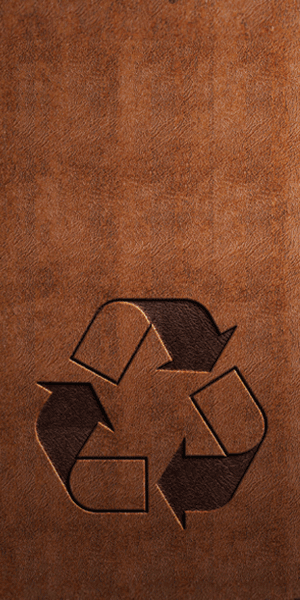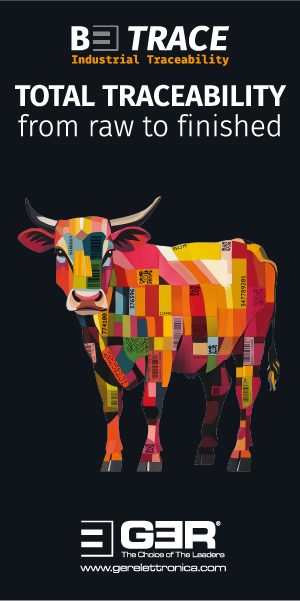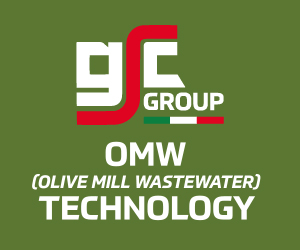Hand, head and heart

Following consumer backlash and mounting regulation surrounding fashion’s clandestine practice of destroying leftover merchandise, enterprising luxury houses have looked within to find ways of beautifying their waste leather. Green in more ways than one, there is money to be saved - and made.
“Fine art is that in which the hand, the head and the heart go together,” said English artist, art critic and patron John Ruskin in The Cestus of Aglaia, the Queen of the Air, first published in 1905. An impactful proponent of the Arts and Crafts movement in nineteenth-century Britain, which blossomed from an appreciation for the natural world and making things by hand, Mr Ruskin would surely have taken note of the at once artisanal, yet thoroughly modern, mindfulness towards excess materials exhibited by luxury fashion houses Loewe (owned by LVMH) and Chloé (Richemont) in recent months.
Both brands have pulled leftover leather from their own previous collections to craft new, high-end leathergoods. For Loewe, headed up by creative director Jonathan Anderson since 2013, this has taken the form of ‘The surplus project’, in which the Spanish house’s woven basket handbags have been reimagined with unused leather – already of the “highest quality and lowest impact”, the brand says – from its archives, cut into strips and subsequently braided together by hand in a lattice design. A second ‘surplus’ offering, the Crab bag charm, similarly incorporates leather from earlier Loewe stock, although this time the material has taken shape through a series of intricate, handmade folds. While differing in form and hue, the iconic properties of the leather selected are stressed: either smooth calfskin or finely textured, soft grained calfskin.
Meanwhile, Paris-based Chloé – where famously environmentally astute, craft-forward designer Gabriela Hearst has been at the helm since December 2020 – showed fifty one-off upcycled vintage leather Edith handbags during its autumn-winter 2021 Paris presentation, Ms Hearst’s debut for the brand. Revamped using leftover fabrics from the collection, including leather, silk and wool, each piece is unique. In homage to the house’s founder, Gaby Aghion, one bag in particular features signature Chloé scallops (first shown by Ms Aghion in 1960) in leather, upcycled from surplus material seen elsewhere on an autumn-winter 2021 trench coat. According to British Vogue, Ms Hearst’s concept resulted in a collection that was “four times as sustainable” as the previous year’s, under designer Natacha Ramsay-Levi.
Raw style
Whereas Boston Consulting Group estimates that the global market for second-hand apparel, footwear and accessories (a growing strain of sustainability, particularly in Asia) is currently worth as much as $30-40 billion, relatively little research has been published as to the economic value of the fashion industry’s leftover materials, also known as deadstock. Co-founder and CEO of New York-based online deadstock marketplace Queen of Raw, Stephanie Benedetto, suggests that this figure could be as much as $120 billion, however. Further underscoring the real market value of unused leather and textile stock, French luxury conglomerate LVMH is slated to unveil a similar marketplace of its own later this year, according to recent reports in Vogue Italia and Harper’s Bazaar. By Paris-based ethical and sustainable finance outlet Novethic’s estimates, this could be announced as soon as late April.
“For some of our enterprise customers,” Ms Benedetto explains to World Leather, “deadstock eats up to 15% or more of their bottom line in just one year. At that volume, waste isn’t just environmentally irresponsible, it’s a CFO issue.” Keen to point out the fiscal currency of surplus materials, she emphasises that some companies do not even realise how much leftover stock they have, let alone the value of it. Although Queen of Raw, which has previously worked with companies including LVMH and H&M, does not have an exact figure for the proportion of leather offered within its overall online mix (this changes every day, Ms Benedetto tells us, owing to the nature of buying and selling inventory), it is a “pretty big” category, she says. Even as deadstock, leather is “extremely valuable”.
The marketplace tries to obtain trend-led deadstock that matches what its 325,000-strong active buying community, which is looking for ranges from haute couture to luxury and fast fashion. After witnessing a spike in cotton and other personal protective equipment (PPE)-appropriate textiles due to the pandemic, Ms Benedetto observes that buyers’ appetite for deadstock leather has been “coming back” recently.
Local greens
Queen of Raw, which encompasses buyers and sellers on “every” continent and reportedly grew by more than 144% in the first quarter of 2021, as a result of covid-19’s impact on supply chains, is not limited to mapping the world’s deadstock, however. A crucial aspect involves trying to locate buyers near to where the ‘waste’ is sited. “If we can find locally sourced or locally available deadstock, located where someone is manufacturing or going to use it, we cut down on carbon emission costs, too,” Ms Benedetto says. Targeting large brands and retailers is, therefore, key to this mission. In partnering with companies who operate at scale, access is granted to the suppliers with their ‘ecosystem’ who either physically hold or still partially own some of the surplus materials Queen of Raw is able to sell via its blockchain-enabled platform. (Queen of Raw itself does not hold any stock.)
Ms Benedetto and her co-founder Phil Derasmo initially started their marketplace as a United States-specific enterprise in 2018, but “very quickly realised that supply chains are global, this is a global problem, our community is global and we needed to go global,” the former tells World Leather. Today, around 40% of its business takes place internationally.
Interestingly, while buyers can search by fabric provenance on Queen of Raw’s website, the company has found that “more people are concerned with where materials are physically located than where they came from”, according to Ms Benedetto. “That’s been our hottest search criteria,” she says, putting this down to the economic and sustainable benefits of locally located deadstock.
Long-term, the goal is to onboard as many large brands and retailers as possible, in order to make their surplus available to more people around the world and, by extension, “democratise” access to leather and other resources, in Ms Benedetto’s words. “A lot of our customers couldn’t get access to this quality stuff at this price point or at these volumes before and now they can,” she elaborates. Ultimately, though, minimising global waste and water usage for the benefit of both people and planet is closest to the Queen of Raw’s heart. She has said previously that she doesn’t mind writing herself out of the market. Do not mistake Ms Benedetto for being blind to the economics, though: “You cannot just do sustainability for good’s sake.”
Leather artisanship is central to Loewe’s luxury identity.
Credit: Loewe






























